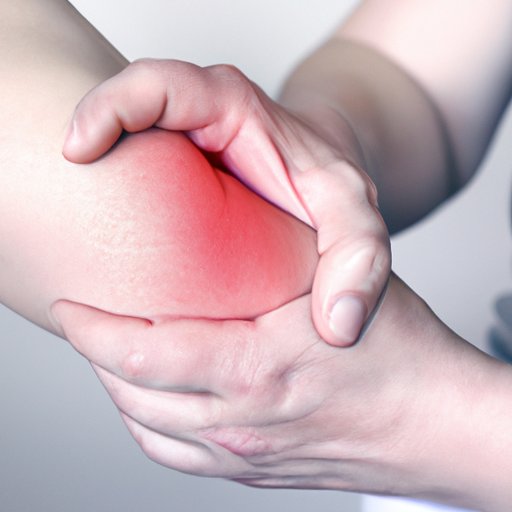
Introduction
Arthritis is a common condition that affects millions of people worldwide. It can cause chronic pain, mobility issues, and a decreased quality of life. In this article, we’ll explore how to know if you have arthritis, as well as the risk factors, diagnosis, treatments, coping strategies, and prevention strategies associated with this condition.
Symptoms to Look Out For
Arthritis is a condition that causes inflammation in the joints. This inflammation can cause a range of symptoms, including joint pain, stiffness, and swelling. The severity of these symptoms can vary from person to person and can even be affected by the weather.
If you’re experiencing joint pain that’s lasted for more than two weeks, it’s a good idea to see a doctor. Other symptoms to look out for include joint stiffness, especially in the morning, and joint swelling or redness.
Arthritis can affect any joint in the body, but it’s most commonly found in the hands, knees, hips, and spine. These symptoms can make daily activities, such as walking or typing, difficult or painful.
Risk Factors
While arthritis can affect anyone at any age, there are several risk factors associated with developing the condition. These include age, family history, and lifestyle factors like obesity or smoking. Women are also more likely to develop arthritis than men.
According to the Arthritis Foundation, over half of all adults with arthritis are under 65 years old. This means that arthritis can impact people at any stage of life, from childhood to old age.
To reduce your risk of developing arthritis, it’s important to maintain a healthy weight, quit smoking, and exercise regularly. If you have a family history of arthritis, it’s also a good idea to talk to your doctor about your risk and any preventative measures you can take.
Diagnosis
Diagnosing arthritis can be a complex process and may involve several different tests. Your doctor will likely start by asking you about your symptoms and medical history. They may also perform a physical exam and order blood tests or X-rays to confirm a diagnosis.
It’s important to get a proper diagnosis as early as possible, as this can affect treatment options. Delaying diagnosis and treatment can result in more significant joint damage and a decreased quality of life.
Treatments
The type of treatment prescribed for arthritis will depend on the type and severity of the condition. There are several different treatment options available, including medication, physical therapy, and lifestyle changes.
Medications can help reduce inflammation, relieve pain and stiffness, and improve joint function. However, they can also have side effects and may not be suitable for everyone. Physical therapy can also be helpful, as it can help strengthen joints and improve mobility.
Lifestyle changes like exercise and diet can also be effective in managing arthritis. Regular exercise can help improve joint function and reduce pain, while a healthy diet can help reduce inflammation and support overall health.
Coping Strategies
Dealing with arthritis can be challenging, both physically and emotionally. Coping strategies can help manage the condition and reduce stress and anxiety. Some coping strategies to consider include joining support groups, learning relaxation techniques like meditation or yoga, and practicing stress management.
Several real-life stories of people who have successfully coped with arthritis can serve as inspiration. These stories can offer encouragement and practical advice to those living with the condition.
Prevention
Prevention is an essential component of arthritis management. While some risk factors, such as age and genetics, can’t be changed, several lifestyle changes can help reduce the risk of developing arthritis.
Maintaining a healthy weight and staying active can reduce the strain on joints, while protecting joints during physical activity can help prevent injury and reduce the risk of developing arthritis. Simple changes like incorporating low-impact exercise, like swimming or cycling, into your routine can make a significant difference in joint health.
Conclusion
Arthritis is a condition that affects millions of people around the world. Early diagnosis and treatment can make a significant difference in joint health and quality of life. Coping strategies and prevention strategies can help manage the condition and reduce the risk of developing arthritis.
If you’re experiencing joint pain or stiffness, it’s essential to see a doctor for an evaluation and diagnosis. With proper care and management, it is possible to live a fulfilling, active life with arthritis.
Additional resources and references for further reading include the Arthritis Foundation, the Centers for Disease Control and Prevention, and the American College of Rheumatology.





